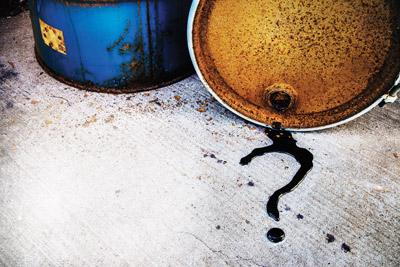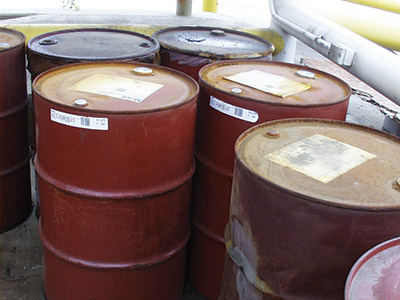Ask the Experts
“What are the benefits and pitfalls of an oil reclamation service? Can it save you money? Are there any negative results?”
 There are many benefts of using a reclamation service, such as its positive impact on the environment. Another advantage is you will not need to purchase costly equipment, supply the labor or dedicate time to reclaim the oil yourself. There also will be no cleanup or mess to contend with after the reclaiming process. The oil will be cleaned to an ISO standard of your choice and returned to service likely cleaner than when it was new.
There are many benefts of using a reclamation service, such as its positive impact on the environment. Another advantage is you will not need to purchase costly equipment, supply the labor or dedicate time to reclaim the oil yourself. There also will be no cleanup or mess to contend with after the reclaiming process. The oil will be cleaned to an ISO standard of your choice and returned to service likely cleaner than when it was new.
Typically, you will receive a comprehensive report on the oil before the reclamation and after it goes back into service. This will allow you to compare the results and ensure you are getting what you pay for. Additive packages can also be restored to their pre-used state by the reclaiming service.
Many different types of oils can be reclaimed, including hydraulic oils, turbine oils, circulating oils for bearing lubrication, paper machine oils, gear oils, quench oils, some metalworking fluids, transformer oils, some synthetics and several specialty fluids. Unfortunately, in most cases, only large amounts of oil (more than 550 gallons) can be reclaimed.
The other pitfalls of using a reclamation service will largely depend on the reclamation company that is used. Investigate the quality of each company being considered and verify all references. If not, you may end up with an oil that damages your machinery.
The risk of cross-contaminated oil is high if the reclamation service does not flush its equipment after every use. In addition, if the company does not have the appropriate permits to transport your oils to its facility and there is a spill or incident, you could be liable.
Keep in mind that the reclaimed oil is no longer the oil you purchased from the distributor but is now blended oil. Check the warranty details of the reclamation service for what to do if you have any issues with the oil. Also, ensure that the warranty on your machinery is not voided by using reclaimed oil.
Oil reclamation can save you money. If you have large amounts of oil you would like to keep in service without the cost of a full change-out, reclamation can be a cost-effective option. In fact, many reclamation companies claim they can save up to 85 percent of the oil’s original cost. Just be sure to check the credentials of the company beforehand to avoid a lot of heartache.
“What is the best cleaning procedure for contaminated oil drums?”
 There are several ways to address this situation, from the best practice of using a cleaned and properly sized container for housing and transporting the oil to the worst practice of rinsing and reflling the drum. All methods have pros and cons and will impact the reconditioned oil’s life span. The worst thing to do is to recondition the turbine oil and then put it back into a drum that hasn’t been properly cleaned. The same goes for putting new turbine oil into an already contaminated system. By doing so, the antioxidants will be attracted to these byproducts and be rendered useless before even being put into service.
There are several ways to address this situation, from the best practice of using a cleaned and properly sized container for housing and transporting the oil to the worst practice of rinsing and reflling the drum. All methods have pros and cons and will impact the reconditioned oil’s life span. The worst thing to do is to recondition the turbine oil and then put it back into a drum that hasn’t been properly cleaned. The same goes for putting new turbine oil into an already contaminated system. By doing so, the antioxidants will be attracted to these byproducts and be rendered useless before even being put into service.
Replacing each drum will save you time and energy. The process of cleaning an oil that has already led to a varnish problem can be labor-intensive and very time-consuming. Reconditioning used drums will not be easy, but it can be done. A number of systems on the market target varnish. The problem is that every drum will need to go through this cleaning process, which will take a signifcant amount of time.
Other factors that should play into your decision of which cleaning process to use include the type of failure that occurred within the lube oil, the type of varnish that is present and the equipment that is at your disposal. The process may be as simple as a wand flush using a flter cart or fltering the oil within the drum through an electrostatic process. Either way, it will be a slow process.
The best and most economical solution would be to use a larger container for transporting and cleaning. Larger containers allow you to flter the oil in the container while minimizing handling. This will eliminate the time involved transferring the oil from a 55-gallon drum to a larger container for fltering and reduce the environmental, health and safety risks. While this may not be the most costeffective option at the front end of the project, it will yield considerable benefts in the long term.
If you have a question for one of Noria’s experts, email it to editor@noria.com
